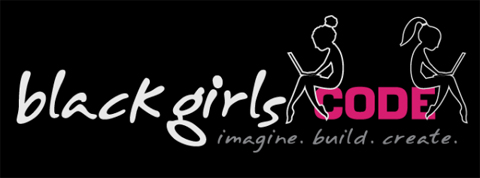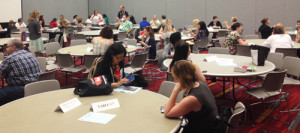
I am not a tech head. Don’t get me wrong, I love the internet, my smartphone, and gifs, but I know very little about the computer science behind the technology I use. Yet the increasing power of technology and the role it plays in our daily lives cannot be understated. Computer science is currently the fastest-growing, highest-paying profession in our economy, but the United States can only fill 30% of the available jobs. With such a rich and open field, one might assume that men and women would be flocking to this career path equally. However that is not the case. Women currently hold less than 12% of computer science degrees with African- American women holding less than 2%. The statistics are even more sobering for Hispanic and Native American women, who hold less than 1% and .5% of computer science degrees respectively.
Enter Black Girls Code, whose founder and CEO, Kimberly Bryant, was the keynote speaker at the LITA President’s Program, “Transforming: Systems and Technology.” Bryant started Black Girls Code three years ago, when she noticed her 12-year-old daughter was constantly glued to her computer or videogame screen. When Bryant thought about her daughter following in her footsteps towards a STEM-related career, she told attendees, she was filled with hope and fear. She remembered how difficult her own path had been and wanted to see a shift towards digital equality.
Some people assume that these statistics are due to a lack of interest in IT among women of color, Bryant said. However African-American women are 29% more likely to own a smartphone and 13% more likely to own a tablet than the average American adult. They are heavy consumers of technology and social media, yet women of color are not being given the opportunity to develop as innovators of the industry. Bryant commented that the white male geek is the dominant narrative when we think about technology, and Black Girls Code was founded to redefine this perception. The goal of the organization, the self-described Girl Scouts of Technology, is to teach 1 million girls to code by the year 2040.
To achieve this, Black Girls Code offers young and preteen girls of color courses in mobile app development, robotics, game design, and more. Bryant’s overarching aim is to expose these girls to the idea that technology touches several parts of their lives, and that this technological knowledge will benefit them regardless of their future career path.
So how do libraries fit into this mission? As fixtures in our communities, Bryant believes that we are on the front lines of bringing change to our neighborhoods. Additionally, we can step up and play a part in introducing girls to technology. We can plant seeds that groups like Black Girls Code will nurture through their classes and mentorships.
Bryant and company’s work is truly outstanding and I am excited to see what the future holds for them and the young girls they work with.
You can visit Black Girls Code for more information about its work. Follow @BlackGirlsCode.
JENNIFER PETTI is a recent Kentucky graduate and enjoys mac and cheese. Like, a lot. You can find her shelving books in Seattle, as well as tweeting and tumbling @sassafrassj.
See, hear, and read more about what’s going on at Annual—in real time and after.
Twitter: @alaannual and #alaac14
Facebook: https://www.facebook.com/events/489205011101981/
YouTube: http://www.youtube.com/user/AmLibraryAssociation
Flickr: http://www.flickr.com/groups/alaac14/
Pinterest: http://pinterest.com/alaannual/
Tumblr: http://ala-con.tumblr.com


